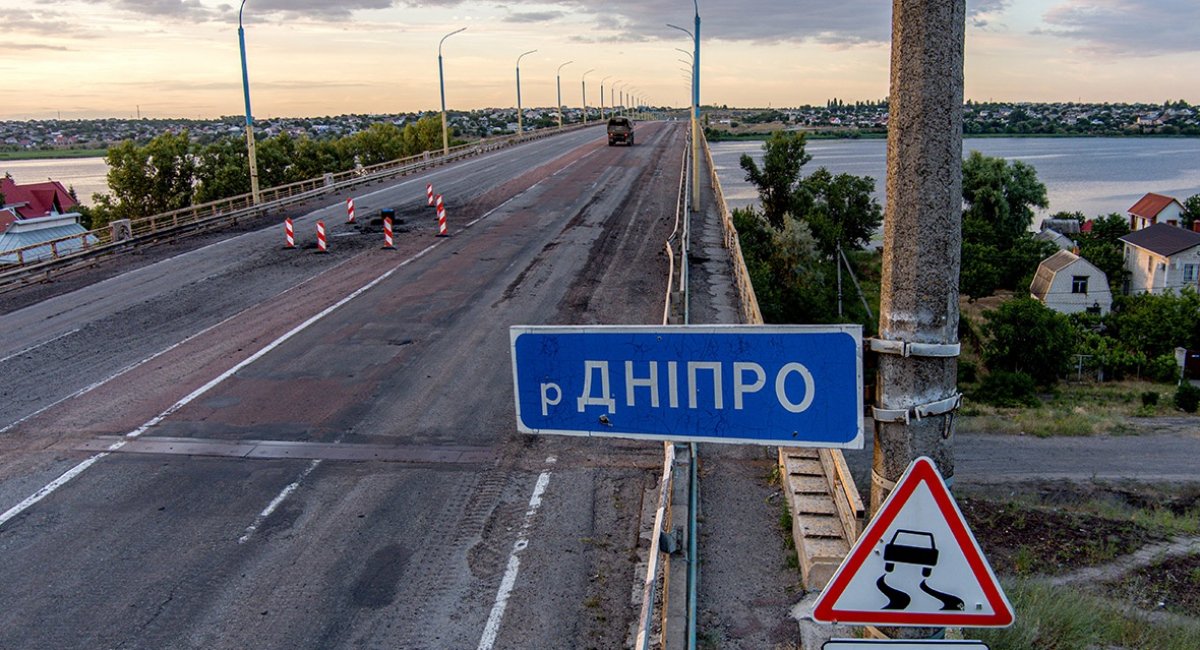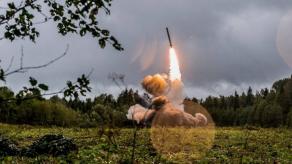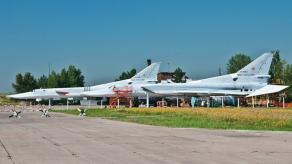On July 31, russian website AVIA.PRO published a note "Bridges leading to Kherson are protected by special russian reflectors, which make missile attacks useless." They say there that satellite images and video footage taken by residents of the Kherson Oblast made it possible to make it clear that the bridges leading to Kherson across the Dnipro are now "reliably protected" by special reflectors that prevent missiles from being directed at this strategically important object. Previously, similar equipment was deployed near the bridge over the Kerch Strait for possible protection against cruise missiles.

Some strange objects located right in the Dnipro can be seen on the presented satellite images and video footage, previously published by residents of the Kherson Oblast. As reported by supposedly "inhabitants of nearby settlements", they are special reflectors installed in order to ensure reliable protection of the Antoniv bridge and the railway bridge, which, as it turned out, was also damaged by the strikes of the Armed Forces of Ukraine.
Read more: 160 Days of the War: russian Casualties in Ukraine
According to satellite images, the railway bridge across the Dnipro is now covered by five radar reflectors, while the road bridge is covered by 32 reflectors at once. The special location of the reflectors in the water indicates that a key focus was on protecting the bridge piers, as it will take months to rebuild the bridge if they are struck.

Yesterday the occupiers began restoring the Antoniv bridge, which is evidenced by the corresponding photos, which show the work of construction equipment in the area where the HIMARS struck.
It could seem that this is an ordinary russian note about the realities of the current war. However, there’s an instant question appears: where do the "residents of nearby settlements" come from, do they know that "they are special reflectors installed in order to ensure reliable protection of the Antoniv bridge and the railway bridge"? Are these residents bridge protection specialists?

But if you think about it, more serious questions arise. It is known that the Antoniv bridge and the railway bridge were fired from the M142 HIMARS and were seriously damaged by their GLMRS M31 missile, which use a guidance system with an inertial measurement unit and a GPS receiver.
This kind of missile is controlled by means of four small additional rudders located in the bow and has a unitary high-explosive warhead weighing 90 kg (of which 1.5 kg is a detonator, and 23 kg is a PBXN-109 explosive). The ESAF detonator is used there, it has three firing modes: approach, impact, and post-impact delay. The range of use of the RS is 15-84 km, and the circular probable deviation is 7 m.

So, obviously no reflectors will protect these bridges from GLMRS missiles, since the latter's guidance system does not have a radar seeker. They can only protect against American RGM-84 Harpoon anti-ship missiles or Ukrainian R-360 Neptun anti-ship missiles, which have inertial and active radar homing systems. The Harpoon anti-ship missile has an impact range of 120 km and a warhead weight of 225 kg (in the R-360 – 280 km and 150 kg, respectively). Even in this case the protection of bridges will questionable, since the R-360 anti-aircraft missile system has GPS correction and the ability to attack ground targets. Why was such a note published on the AVIA.PRO website? Apparently, for propaganda purposes, to reassure the population of Russia, showing that no Ukrainian missiles are dangerous to the russian army. But neither these reflectors nor similar notes will stop Ukrainian missiles.
Oleksii Yarovy for Defense Express
Read more: The Armed Forces of Ukraine Fighters Spot And Destroy Hidden russian Tank With the Stugna-P ATGM (Video)














